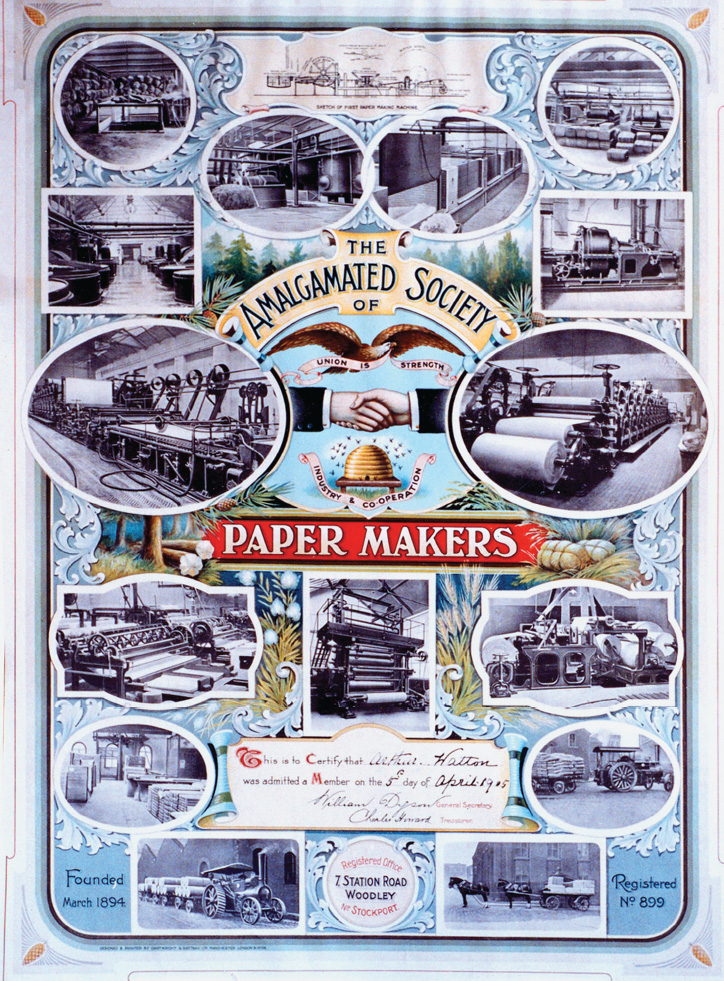A History of Western Society: Printed Page 677
A History of Western Society, Value Edition: Printed Page 682
The Early British Labor Movement
Not everyone worked in large factories and coal mines during the Industrial Revolution. In 1850 more British people still worked on farms than in any other occupation, although rural communities were suffering from outward migration. The second-largest occupation was domestic service, with more than 1 million household servants, 90 percent of whom were women. Thus many old, familiar jobs outside industry lived on and provided alternatives to industrial labor.
Within industry itself, the pattern of artisans working with hand tools in small shops remained unchanged in many trades, even as others were revolutionized by technological change. For example, the British iron industry was completely dominated by large-scale capitalist firms by 1850. Many large ironworks had more than one thousand people on their payrolls. Yet the firms that fashioned iron into small metal goods, such as tools, tableware, and toys, employed on average fewer than ten wage workers who used handicraft skills. Only gradually after 1850 did owners find ways to reorganize handicraft industries by increasing the division of labor (and thus undermining the skills and wages of workers) and also by increasing the speed and intensity of work.
Working-class solidarity and class-consciousness developed both in small workshops and in large factories. A general strike of adult cotton spinners in Manchester in 1810 testifies to the growth of anticapitalist sentiment in Britain’s northern factory districts in the first decades of the nineteenth century. Commenting in 1825 on a strike in the woolen center of Bradford and the support it had gathered from other regions, one paper claimed with pride that “it is all the workers of England against a few masters of Bradford.”10 Even in trades that did not undergo mechanization, unemployment and stagnant wages contributed to class awareness.
The classical liberal concept of economic freedom and laissez faire emerged in the late eighteenth century, and it continued to gather strength in the early nineteenth century in opposition to the rising tide of working-class anger. In 1799 Parliament passed the Combination Acts, which outlawed unions and strikes. In 1813 and 1814 Parliament repealed the old and often-disregarded law of 1563 regulating the wages of artisans and the conditions of apprenticeship. As a result of these and other measures, certain skilled artisan workers, such as bootmakers and high-quality tailors, found aggressive capitalists ignoring traditional work rules and trying to flood their trades with unorganized women workers and children to beat down wages.
The capitalist attack on artisan guilds and work rules was bitterly resented by many craftworkers, who subsequently played an important part in Great Britain and in other countries in gradually building a modern labor movement. The Combination Acts were widely disregarded by workers. Printers, papermakers, carpenters, tailors, and other such craftsmen continued to take collective action, and societies of skilled factory workers also organized unions in defiance of the law. Unions sought to control the number of skilled workers, to limit apprenticeship to members’ own children, and to bargain with owners over wages.

In the face of such widespread union activity, Parliament repealed the Combination Acts in 1824. Unions were subsequently tolerated, though they were not fully legal until 1867. The government also kept the army in readiness to put down any worker protests deemed too unruly or threatening.
The next stage in the development of the British trade-union movement was the attempt to create a single large national union. This effort was led not so much by working people as by social reformers such as Robert Owen. Owen, a self-made cotton manufacturer (see page 669), had pioneered in industrial relations by combining firm discipline with concern for the health, safety, and hours of his workers. After 1815 he experimented with cooperative and socialist communities, including one at New Harmony, Indiana. Then in 1834 Owen was involved in the organization of one of the largest and most visionary of the early national unions, the Grand National Consolidated Trades Union.
When Owen’s and other ambitious schemes collapsed, the British labor movement moved once again after 1851 in the direction of craft unions. The most famous of these was the Amalgamated Society of Engineers, which represented skilled machinists. These unions won real benefits for members by fairly conservative means and thus became an accepted part of the industrial scene.
British workers also engaged in direct political activity in defense of their own interests. After the collapse of Owen’s national trade union, many working people went into the Chartist movement, which sought political democracy. The key Chartist demand — that all men be given the right to vote — became the great hope of millions of common people. Workers were also active in campaigns to limit the workday in factories to ten hours and to permit duty-free importation of wheat into Great Britain to secure cheap bread. Thus working people developed a sense of their own identity and played an active role in shaping the new industrial system. They were neither helpless victims nor passive beneficiaries.